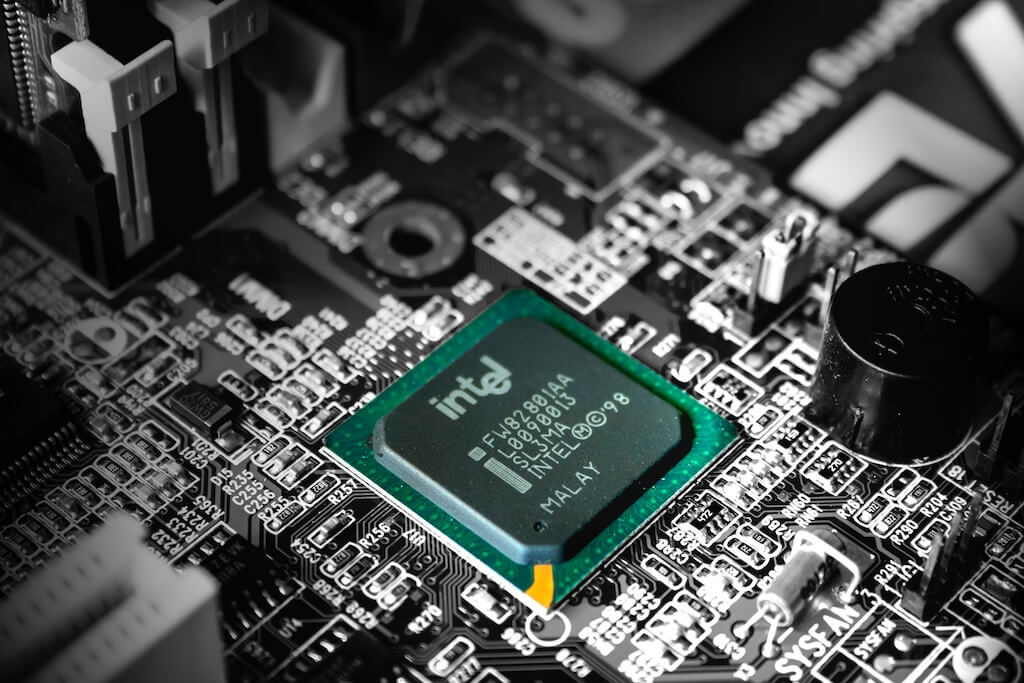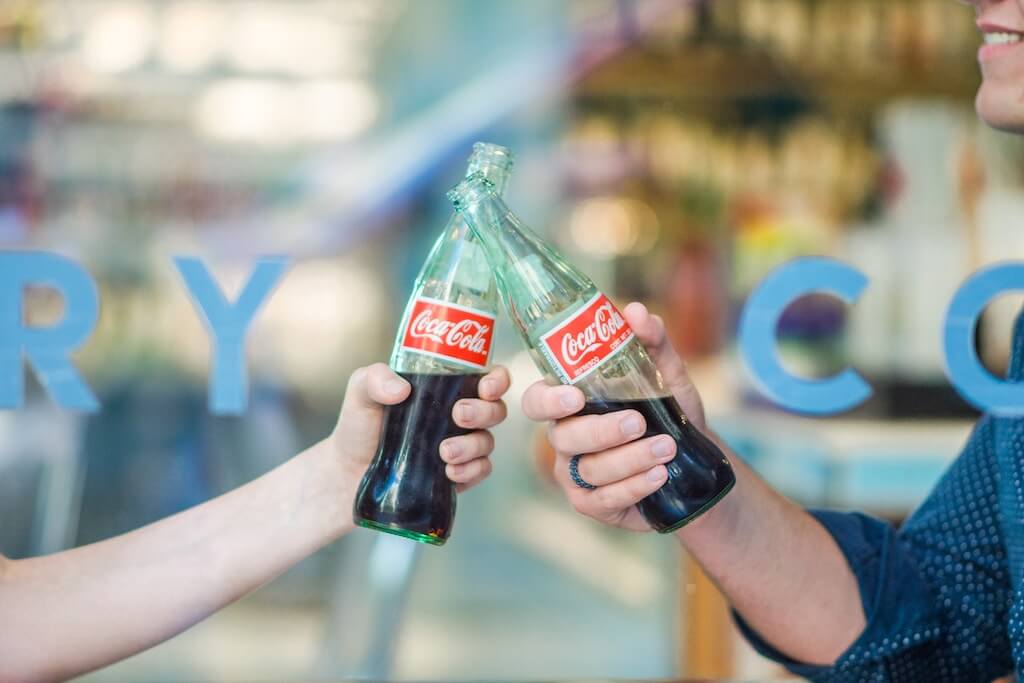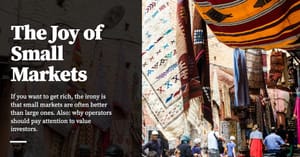This is the fifth post of The Chinese Businessman Paradox. View the previous post here. Note: this series is more speculative than the other things on this blog, as I’m writing down the ideas as I learn them, not necessarily when I’ve used them.
Note: the definition of free cash flow used here is not the textbook one. There are at least three definitions that are widely used; I'm rewriting this piece to work in the classical definitions, in order to document how this definition differs.
The Chinese businessmen I’ve met seem to enjoy uttering things like “pay other people as late as possible” and “cash flow is king”.
A finance major would hear such sayings and immediately pick up on the true meaning behind the words. But if you’re a finance noob, like me, it wouldn’t be clear why such things are so central to the running of a healthy business.
In truth, it’s because the terminology used by these businessmen is wrong — or ‘wrong’, in the sense that if you’re canvassing the business literature to understand how they think, you’d be using the wrong keywords. It’s not cash flow that matters in a business. It’s not cash flow that they’re referring to. Instead, it’s free cash flow that’s the important thing. It’s free cash flow that these businessmen are referring to when they say things like ‘cash is king’ or when they skim the financial reports that are handed to them at the end of an accounting period.
Free Cash Flow Defined
What is free cash flow and why is it so important to an understanding of business?
The ‘what’ question is easy to answer: just google the term and you’ll find a gajillion results that explains FCF and gives you its formula. Here’s the Investopedia article on the topic:
Free cash flow represents the cash a company generates after cash outflows to support operations and maintain its capital assets. Unlike earnings or net income, free cash flow is a measure of profitability that excludes the non-cash expenses of the income statement and includes spending on equipment and assets as well as changes in working capital.
The Investopedia article is great, and it goes into detail into all the ways FCF can be used to evaluate companies. But this definition isn’t likely one that a Chinese businessman would give you. A Chinese businessman operates on intuition. He’ll wave you away and say that you shouldn’t “read too many books” and “aiyah business is simple lah — you have cash, you are king, what’s so difficult? Why so many complicated words?”
So in that same spirit, let’s see if I can give you an intuitive sense of what FCF means. And then we’ll loop back to talk about what this implies when it comes to understanding Chinese businessmen.
Free Cash Flow as Model
Here’s the explanation that I prefer: FCF is the amount of money that you can take out of a business without affecting its future prospects. That is to say, if a business generates $1 million in profits, and $800k of that is free cash flow, you can take that $800k out of the business and set it on fire and have the business still produce at least $1 million the following year.
Let’s back up a bit and explain that by example.
I think it’s clear to most of us that you can create a lot of revenue without making any profit. For instance, if you sell a dollar for 90 cents, you’d get a heck of a lot of revenue from eager customers, but you’ll also be losing money every step of the way. (See: the glowing carcass of Moviepass).
In the same way, you can have a lot of profit, but not have a lot of free cash flow.
Take Intel as an example. For the sake of argument, let’s say that Intel makes $100 million in profit for 2018. How much of that money can Intel take out of the business and return to shareholders without affecting the future of the company? The answer is: not as much as you might think. Intel certainly can’t take all of their profits and return it to shareholders.

Why is this, you ask? Well, the semiconductor business is extremely competitive. Intel has to take some of those profits and reinvest it in R&D or risk getting left behind, plus they have to use some of their profits to retool the factories that make their chips.
Not doing so would jeopardise their future profits. If competitors keep their R&D spending high and Intel doesn't, Intel would start having their asses handed to them. That $100 million in profit for 2018 might become $90 million in 2019, and $80 million in 2020, and so on.
(In practice, Intel is taking a drubbing because they’ve not been well positioned to capitalise on the growth of mobile, but this is a simplified example so I’m leaving that out of the story).
Now compare Intel to a business like Coca-Cola. If Coca-Cola earns $100 million in profits in 2018, how much of that can be taken out of the business? The answer is — well, in comparison to Intel — a heck of a lot more.
Why is this? The answer is that Coca-Cola doesn’t have huge R&D costs! It’s a completely different type of business: it has a superb brand, a great product, and good margins … especially so since they make syrup (cheaply) and ship that syrup (cheaply) over the world to bottling facilities — partner companies that Coca-Cola grants licenses to; companies that own actual bottling plants where they combine the shipped syrup with carbonated water and packages the mixture in cans and bottles for sale in their locations.

Unlike Intel, Coca-Cola doesn’t need to invest large amounts of capital into new products each year at the risk of being left behind — it can simply sit back and watch as the money pours in. This is what Warren Buffett refers to when he says he likes businesses with an economic moat.
(In practice, generating a lot of money brings with it a different set of problems, where management is tempted to spend the money in ways that aren't aligned with shareholder interests. But — again — for the sake of simplicity, I’m leaving that out of this story, because I just want to demonstrate FCF in action).
The neat trick of free cash flow is that once you understand the existence of this metric, plenty of things about business should fall into place for you. Or at least — it did for me, and boy did I feel like a total idiot when it did.
Free Cash Flow as Defence
In a previous blog post, I wrote that one economic moat pattern seems to be ‘tie a good thing to a better thing’. I profiled Qualcomm, McDonalds, and Amazon, and pointed out that each of these businesses are a high volume, low-margin, relatively unattractive business tied to a low-volume, high profit, more attractive business. I now understand that each of these examples can be explained by a single metric: free cash flow.
- Qualcomm is in the competitive chip business. But it has a licensing business that basically prints money — every phone manufacturer has to pay Qualcomm a licensing fee to use its LTE and CDMA patents in their phones regardless of whether said phone actually uses a Qualcomm chip. This means that Qualcomm’s patent business produces nearly pure free cash flow — money that Qualcomm can redeploy to defend its chip business.
- McDonalds is in the low-margin, relatively unattractive F&B business. But it has a real estate arm that owns lots of locations it rents out to its franchisees. Property is a high FCF business once you pay off the mortgages that you used to purchase said property. Once that’s paid off, most of your rental income becomes free cash flow … that McDonalds uses to defend its lower margin food business.
- Amazon has AWS, which is similar to the property business: once it pays off its data centre construction costs, the subscription fees that AWS’s customers pay it are essentially free cash flow — ready to be redeployed in service of Amazon’s eCommerce ambitions.
I think the key point to understand here is that free cash flow is truly ‘free’ — that is, it can be redeployed in the business in whatever way that management sees fit.
And this brings us back to Chinese businessmen.
Free Cash Flow and Growth
Two weeks ago I wrote about a ‘land and expand’ strategy for reading. But I didn’t mention what I was using that strategy for.
Over the past year, I’ve been executing a reading program on the following two questions (questions, I might add, that I raised at the end of my last instalment in the Chinese Businessman Paradox series):
- How do you grow a business and escape the ‘SME loop’?
- Why do conglomerates make up the majority of large companies in Asia, while ‘focused’ businesses make up the majority of large companies in the US?
I’m afraid I don’t have a good answer for the second question — only half-formed theories. But I think I’ve discovered the answer to the first question.
The business school answer to ‘how do you grow a business?’ is two-fold. First: you need to be able to make a return on investment that’s higher than your cost of capital. You can only do this if your market isn’t saturated, or if you have a competitive advantage that allows you to take market share away from your competitors.
Second: you need a source of capital in order to pursue that growth. There are really only three ways to get capital: you sell equity, you take on debt, or you grow using retained earnings.
Free cash flow, by definition, is how much of your retained earnings can be used for growth.
It makes me a little embarrassed to admit that I’ve only just learnt this. In the last post of this series, I wrote that it was very difficult for my last company to ‘escape the SME Loop’ — a cycle of ploughing profits back into the business, only to get increasingly lower returns on investment. I said that I suspected most Chinese businessmen eventually expanded outwards as conglomerates because it was the easiest way to grow.
But I think there’s a simpler explanation: we had limited free cash flow, and were tapping out in our market. The earnings from our primary business wasn’t enough to fund an aggressive attempt to take market share away from our competitors; we didn’t have great competitive advantages, and we didn’t think to use that FCF to expand into other adjacent markets.
(I should add that my old boss is now doubling down on product-related competitive advantages; he thinks most players in the POS space in Singapore aren't able to build out software engineering teams, and he sees a gap in one particular place in the market. So he thinks this can be a good short-term competitive advantage. I agree, and wish him luck).
What makes this all the more embarrassing is that ‘free cash flow as enabler for growth’ is well known in finance circles.
For instance. What does Warren Buffett do at Berkshire Hathaway? Contrary to popular opinion, Buffett isn’t a stock picker — or at least, he hasn’t been one for the past three decades. Buffett’s entire MO is to buy companies with high FCF, sit on that FCF to build a stockpile of cash, and then use the money he’s accumulated to buy other businesses with high FCF. He repeats this cycle ad nauseam for 40 years … and ends up becoming the richest man in the world.
What are some of these companies that Buffett buys? The example that’s usually given is that of Berkshire’s insurance companies — which are great sources of free cash flow. Insurance businesses take in premiums up-front, but only pay out if there’s an accident. In the meantime, the money they collect is available for redeployment into other opportunities. (In practice, this is a lot trickier to do than most would think; Buffett does bring some unique advantages to the table here. If you’re curious, you should probably read Lowenstein and Hagstrom’s books).
But there are other kinds of companies in Buffett’s history that are ridiculously good with FCF, but don’t look at first glance like insurance companies. Take, for instance, Blue Chip Stamps. Lowenstein writes, in his biography of Buffett:
Blue Chip belonged to a fading slice of Americana. It collected a fee from supermarkets that distributed its trading stamps and redeemed these stamps for “free” toasters, lawn chairs, and the like. Buffett, of course, had no interest in toasters. He was interested in the money.
The secret of its appeal was that Blue Chip gathered in cash up-front, but disgorged its funds only over time, as shoppers brought in stamp books. Often the stamps were stuffed into drawers and forgotten. In the interim, Blue Chip had free use of the float. To Buffett, Blue Chip was simply an insurance company that wasn’t regulated (emphasis added).
Its “premiums”— that is, the stamps sold to retailers — amounted to $120 million a year. This gave Buffett a hefty bankroll, in addition to the one he had at Berkshire. He and Munger went on Blue Chip’s board, took over the investment committee, and began to put the float to work.
I remember coughing water over my desk when I read this. Buffett used the cash from Blue Chip to buy See’s Candies. He then used the cash from See’s Candies to buy the Buffalo Evening News. I’ll never look at supermarket stamp books the same way again.
Are there variants of this playbook? Yes, of course. Private equity firms study free cash flow as a means of evaluating a company’s capacity to handle debt. If you have a solid stream of FCF, it’s likely that you can service the debt load that PE firms will lay on you. And so they do just that, walking away with the spoils from this act of open-air corporate surgery.
Why does this matter to my investigation of Chinese businessmen? Well.
Imagine that you’re part of the Chinese diaspora in South East Asia. You don’t have access to mature equity markets — all the countries in the region are still developing, and have extremely young bourses. Effectively, you have only two sources of cash available for you to grow: you can take on debt (read: bank loans; bond markets were equally immature, so you couldn’t issue bonds for growth), or you could grow from retained earnings.
If I’m right, every great South East Asian conglomerate has a source of free cash flow in its past. I’ve mentioned that Robert Kuok started scaling his empire only when he got into commodities trading. The trading supplied a source of free cash flow that he could redeploy into the rest of his business, building up holdings in shipping, hospitality, real estate, and palm oil.
A second order implication here would mean that companies that took on no debt and sold little equity would have grown based on the strength of their retained earnings. Microsoft is a good example of this — its market expanded so aggressively that Gates reflected: ‘software, if you can sell it in volume, has extremely favourable economics because the costs are quite finite (…) the first few years Paul (Allen) and I worked for free, but after that we were just generating cash.’
But even in other industries, we see businesses expanding from retained earnings when they refuse to go public, or when they refuse to take on too much debt. The notorious private conglomerate Koch Industries expanded by strategically using its Pine Bend Refinery as a source of free cash flow. In his history of the company, Kochland, business reporter Christopher Leonard writes:
Since the late 1950s, Fred Koch had owned a minority share in the Great Northern oil refinery outside of Minneapolis, near the Pine Bend Bluffs natural reserve. The other shareholders in the refinery were an oil tycoon named J. Howard Marshall II and the Great Northern Oil Company. In 1969, the refinery didn’t look like a gold mine. Competition in the sector was fierce, with new refineries being put into production monthly.
But the Pine Bend refinery, as everyone called it, had a secret source of profits. And this source of profits could be traced to exactly the kind of government intervention that (Austrian economist) Hayek hated most. In the 1950s, President Dwight Eisenhower capped the amount of oil that could be imported into the United States, in one of the federal government’s many ploys to protect domestic oil drillers. (Imported oil was often cheaper than domestic oil, so US drillers wanted it kept out.) But there was a loophole in that law that allowed unlimited imports from Canada. As it happened, Canada was the primary source of oil processed at the Pine Bend refinery. Pine Bend was one of only four refineries in the nation that was able to buy cheaper imported oil in unlimited quantities, giving it a huge advantage over firms that were forced to buy mostly domestic oil. The four companies who benefited from this loophole received a second advantage from the government. Thanks to a complex voucher system for oil imports, companies like Koch were able to “double dip” and exchange their voucher tickets for domestic oil in a scheme that gave them a subsidy of $1.25 per barrel. This loophole boosted profits, and Fred Koch had been happy to remain a minority shareholder and enjoy the windfall.
To hear Leonard tell it, Charles Koch saw what others did not: that the refinery could be turned into a source of free cash flow to fuel his ambitious expansion plans. To do this, he had to crush a powerful union, and increase refinery production by diversifying into other petrochemical by-products. He did both, to the detriment of union and environment alike.
If FCF is so important to growth, we should see sources of FCF in the biographies of various Chinese tycoons. I’m starting to turn my reading program back to the history of other businessmen in South East Asia, before hopping across the pond to a history of the chaebols and the zaibatsus. We’ll see if I’m right.
Wrapping Up
This is an extremely simple exploration of free cash flow. I don’t want to pretend that this is in any way complete: you should read the Investopedia article on FCF and its formula; and think a little about businesses that you have had first-hand experience with.
But I do want to point out that FCF is just one of many lenses that you should use when thinking about businesses. For instance, Tren Griffin has a particularly good post about gross margin, and mentions in it that Jeff Bezos focuses on ‘absolute dollar’ free cash flow as a way to drive down margins and destroy Amazon’s competition. The interactions between FCF and other measures of business performance are just as important as the concept itself.
FCF is merely that — a lens with which to build up a mental model of a business. Which is the sort of the point, really: the mental models of Chinese businessmen are largely intuitive and built from experience. If in their heads a business is a box that takes in money on one end and produces more money on the other, then free cash flow is simply the portion of money produced that can be taken out … and therefore reinvested, for growth.
So no wonder they’ll say things like “cash (flow) is king” and “pay other people as late as possible”. To a traditional Chinese businessman, growing their business is everything, so FCF is everything. Cash flow is indeed, truly king.
Note: An earlier version of this article referred to using profits to retool factories as ‘capitalisation costs’; this was wrong. I must’ve been drunk or something; the proper name for such activity is ‘capital expenditure’.
Originally published , last updated .
This article is part of the Capital topic cluster, which belongs to the Business Expertise Triad. Read more from this topic here→





